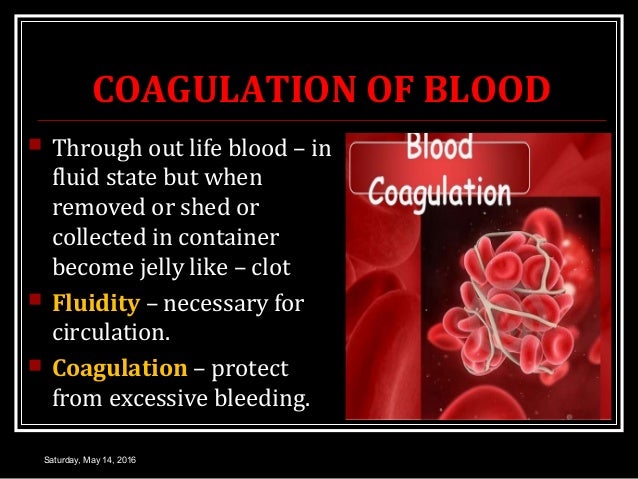Coagulant Anticoagulant

Vitamin K: Vitamin K is fat soluble vitamin that promotes coagulation.
There are three forms of Vitamin K.
Vitamin K1 (Phylloquinone): It is obtained from
plant.
Vitamin K2 (Menaquinone): It is synthesised in
intestine
Vitamin K3 : It is synthetic analogue.
Vitamin K is used by body to synthesize coagulation factors II,
VII, IX, & X in liver. Vitamin K deficiency
does not occur due to dietary deficiency. It becomes ineffective during liver
disease because it is utilized only by liver to synthesize coagulation factors.
Uses: It is used to treat haemorrhage. But its action starts
after 24 hours. Fresh frozen plasma is used to control immediate bleeding.
(Haemorrhage)
Anticoagulants
There are two types of
anticoagulants:
1 Heparin
2. Vitamin K Antagonist
Warferin
sodium, acenocoumarol, Dicoumarol
Anisindione,
Phenindione, Diphenadine
Hirulog,
Hirudin
Heparin: Heparin is polysaccharide. It consists of long chain of
sulphated disaccharide units. It contains sulphate and carboxylic acid group
that make it highly acidic. Heparin is found as heparin-histamin complex in
mast cell secretary granules. It is rapid acting anticoagulant that produce
effect within a minute. It is administered intravenously. It mainly interfere
in formation of thrombin.
Mechanism of Action: Body has antithrombin-III that converts active clotting factors
IIa (Prothrombin), IXa (Christmas factor), Xa (Stuart power factir), XIa
(Plasma thromboplastin Antecedent), XIIa (Hageman factor) to inactive form.
This inactivation is slow process. Heparin potentiates aantithrombin III action
to inactivate thrombin and other coagulation factors. Antithrombin III is also
known as heparin cofactor.
Binding of heparin with thrombin depends upon chain length of
heparin. Increase in chain length of heparin increases binding affinity of
heparin with thrombin. Thus high molecular weight heparin has more affinity to
thrombin and low molecular weight has low affinity with thrombin. But low
molecular weight heparin has high affinity to coagulation factor Xa. Thus low
molecular weight heparin is also used as anticoagulant. Ex of low molecular
weight heparin: Dalteprin, Enoxaprin, Tinzaprin.
Chronic use of heparin decreases antithrombin III activity. This
may increase chance of thrombosis. Low dose of heparin is recommended in
chronic administration of heparin. It minimise risk of thrombosis.
Pharmacokinetics: It is not absorbed orally and destroyed by gastric juic in
stomach. Thus it is administered by intravenous or subcutaneous route. It does
not cross placental barriet. It is metabolised in liver.
Therapeutic Uses:
·
It is antithrombic drug to
treat deep vein thrombosis. And embolism.
·
It is used as prophylactic
agent to prevent post operative thrombosis
·
It prevent thrombosis in
myocardial infarction
·
It is used during dialysis
to prevent thrombosis
·
It does not cross
placental barrier thus it is drug of choice in venous thrombosis and embolism
in pregnant women.
Adverse Effects: Increase in bleeding time, hypersensitivity reaction and
thrombocytopenia (Low blood platelet count).
Pharmacokinetics: Coumarin anticoagulants are administered by oral, IM or rectal
route. Food in GIT interferes with absorption of Coumarin anticoagulants.
However they are completely absorbed from GIT upon oral administration. Warfarin
has high affinity with with plasma proteins i.e about 95% to 99%. This affinity
restricts its distribution to CSF, and breast milk. But it is well distributed
and readily crosses placental barrier.
Several drugs have high affinity with plasma proteins than
warferin. These drugs displace warferin from plasma protein. Free warferin will
circulate in body and it will potentiate action of warferin.
Antocoagulant effects vary from person to person. Thus its dose
must be adjusted carefully.
Adverse Effects:
·
Main side effect is
haemorrhage. It can be treated by oral administration of vitamin K. In severe
condition vitamin K is administered by IV route.
·
Warferin produces
teratogenic effect because it can cross placental barrier. In first trimester
it produces facial and CNS abnormalities.In second and third trimester it
produces hypoprothrombinemia.
Precaution: It should be administered with caution in patients suffering
from bleeding disorder, peptic ulcer, severe wounds etc.
Uses: They are used as anticoagulant in pulmonary embolism, deep vein
thrombosis, Thromboembolism.
एक छोटी सी कोशिश ... कुछ गलतियाँ है, माफ़ कीजियेगा ...









0 Comments:
Post a Comment
Note: only a member of this blog may post a comment.
Subscribe to Post Comments [Atom]
<< Home